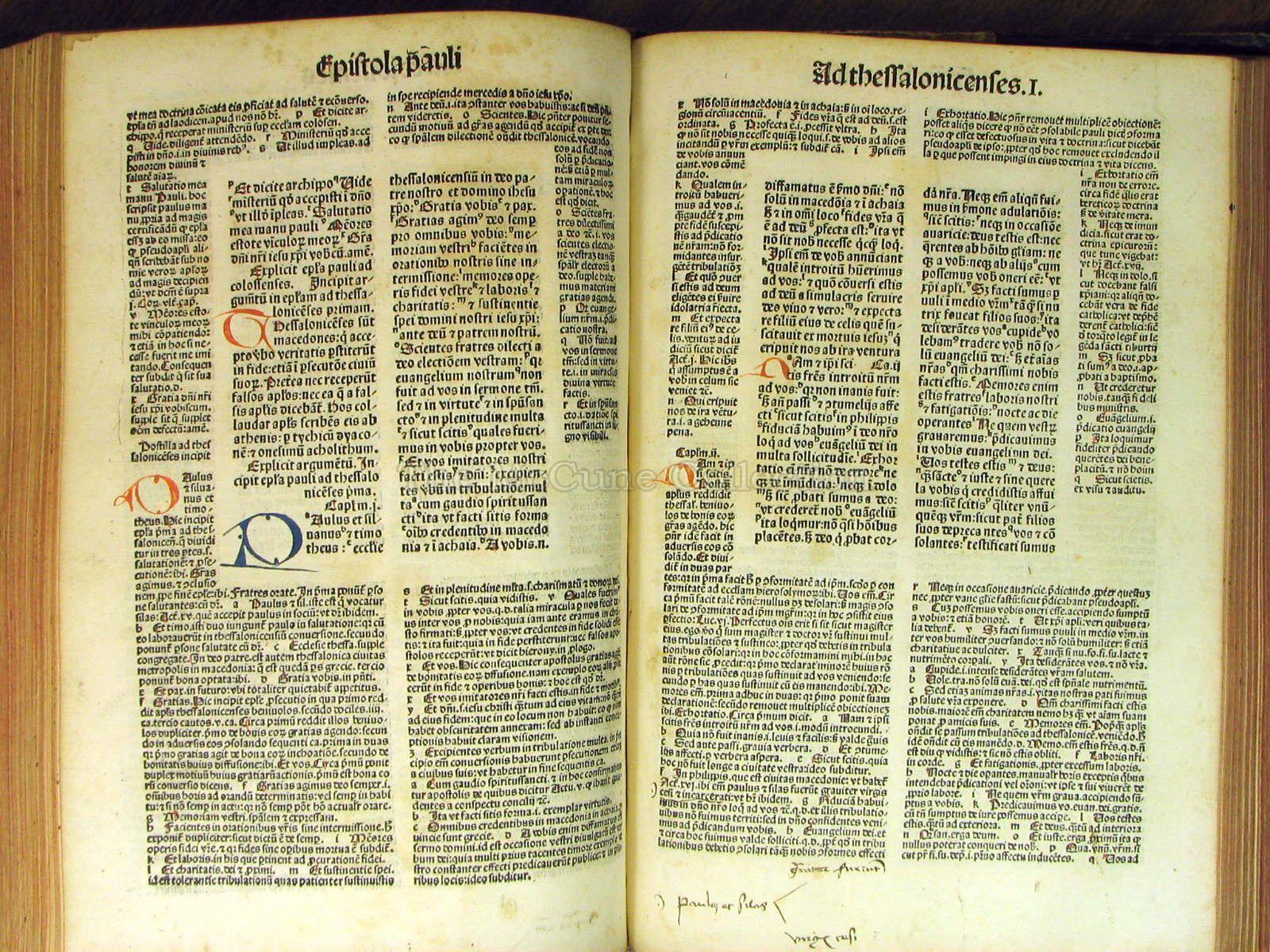Incunabula
An incunabulum is a book, single sheet, or image that was printed -not handwritten- before the year 1501 in
Europe. These are usually very rare and fragile items whose nature can only be verified by experts. The origin of the word is the Latin incunabula for "swaddling clothes", used by extension for the infancy or early stages of something.
The first recorded use of incunabula as a printing term is in a pamphlet by Bernard von Mallinckrodt, "Of the rise and progress of the typographic art", published in Cologne in 1639, which includes the phrase prima typographicae incunabula, "the first infancy of printing". The term came to denote the printed books themselves from the late 17th century.
There are 2 types of incunabula, which are the xylographic and the typographic. The xylographic is made from one carved or sculpted block for each page and the typographic is made with movable type on a printing press in the style of German Johannes Gutenberg, whom I will explain later on. The incunabula does not reflect any important developments in the printig process (around 1500). It generally refers to the earliest printed books, completed at a time when some books were still being handwritten/hand-copied. There became a great diversity in the texts, that were chosen for printing anthe styles in which they appeared, thanks to the spread of printing.
During this period a myriad of typefaces were occured in local forms of writing or derived from the various European forms of Gothic script, or from documentary scripts, like most of Caxton's types. Tyes modelled on humanistic hands, especially in Italy, and these typefaces are still used today, hardly modified, in digitaal form.
 |
| author:Brunschiwig, Hieronymus |




No comments:
Post a Comment